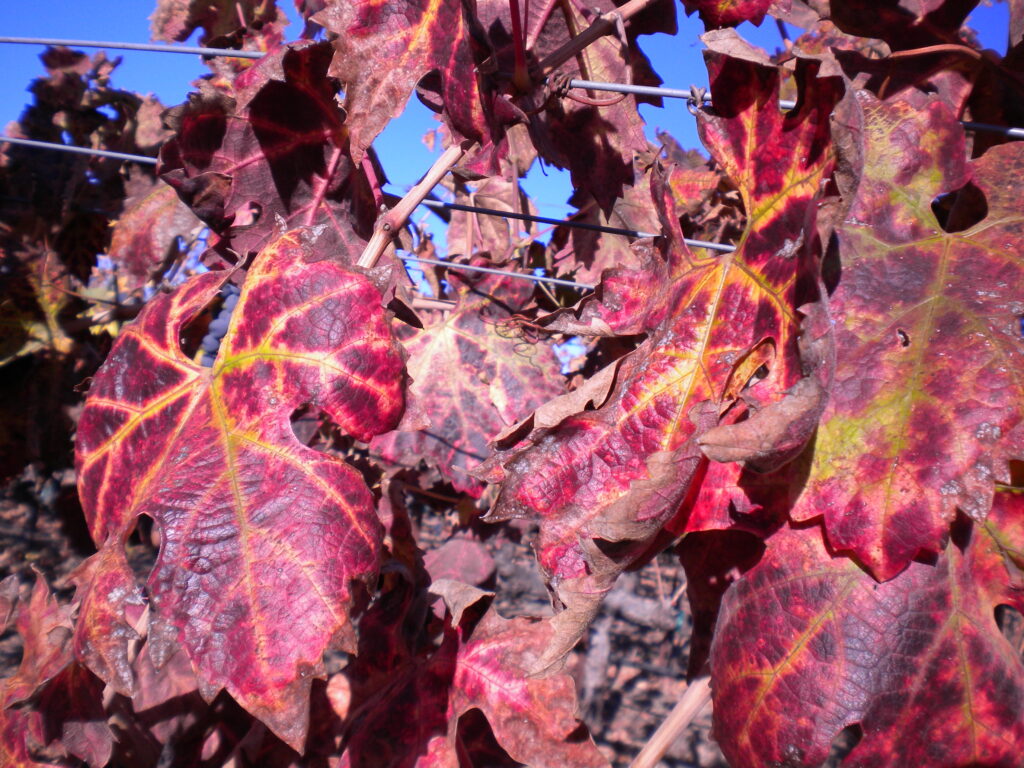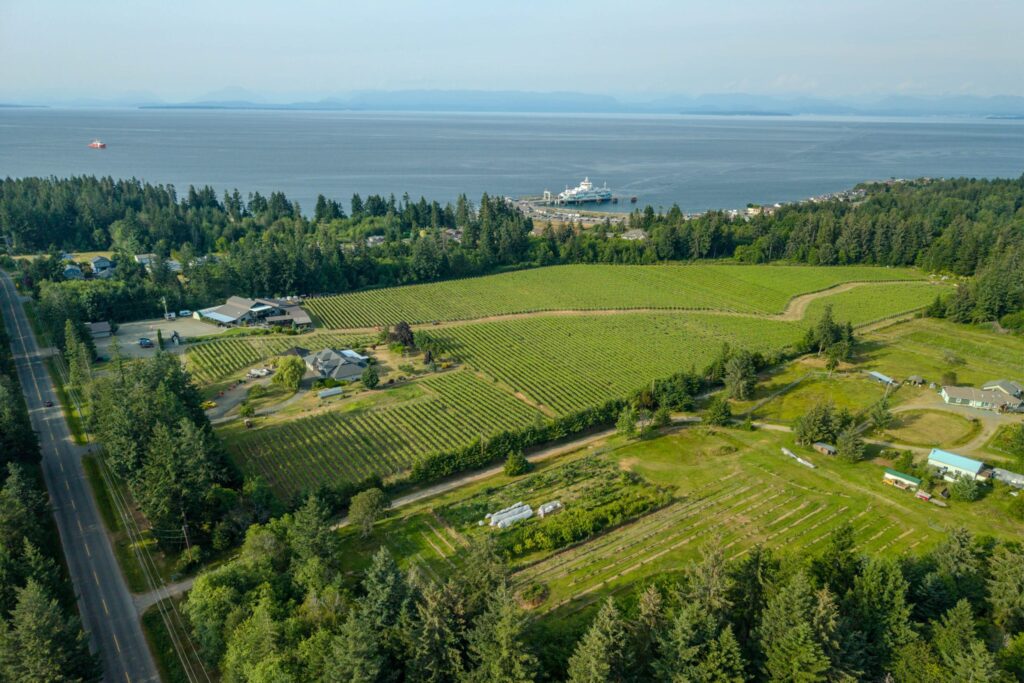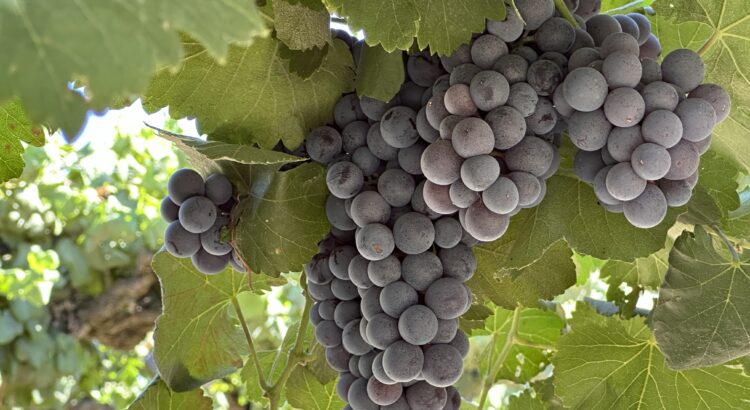Exploring the best trellis systems for vineyards

By Alyssa L. Ochs
For today’s modern, successful vineyards, trellises are much more than just a system of wires and posts. Trellises are crucial to a vineyard’s grape quality and productivity because of their impact on airflow, sun exposure and pest and disease management.
If you’re starting a new vineyard or thinking of upgrading your current trellis system at an existing one, it’s important to know your options and carefully choose the right setup. In this article, we look at the various trellis systems available to vineyards and their pros and cons. By understanding their installation and maintenance requirements, vineyard owners can make the best decisions while factoring in specific grape variety needs, costs, labor demands and future goals.
Types of Vineyard Trellis Systems
Alexander J. Wiesen, owner of Empire Trellis, told The Grapevine Magazine about the three main types of trellis systems vineyards use. The family-owned, Empire, Michigan-based company specializes in complete turn-key trellis installations and travels for installations within the U.S. and Canada.
Wiesen explained that vertical shoot positioning (VSP) works well for quality wine production and allows for mechanization. VSP offers beneficial sunlight penetration and uniform ripening of the grapes.
However, this type of system isn’t ideal for high vigor vines and requires more canopy management. If you don’t diligently remove leaves and thin shoots, canopies can become overly dense, which limits airflow and increases disease risk.
He shared that high cordon trellis systems are low-maintenance and straightforward. They’re ideal for warm climates and make vineyard work easier for crews, while being affordable to manage after installation.
However, shading can be an issue, and there’s the potential for lower fruit quality with this type of trellis. You may experience unwanted shading below the fruiting zone, which can lead to muted flavors in finished wine.
Meanwhile, a T-trellis or single wire system is cost-effective and suitable for mechanized pruning and harvest. This system often only requires a single horizontal wire that’s supported by posts, making installation and maintenance easier than other systems.
Yet, Wiesen advised that this approach gives vineyard operators less control over the canopy and that it may not suit premium varietals adequately. This low-input option is a practical choice but may lead to uneven ripening or difficulty managing grapevine diseases.
Trellis Offerings from Empire Trellis
Empire Trellis offers various solutions for vineyards to consider for their trellis systems. For example, Wiesen’s company offers VSP trellises, which are among the most widely used systems among vineyards, especially for premium wine grapes. He said that VSP systems are ideal for varieties with upright shoot growth.
Empire Trellis also offers high cordon systems, which are common in warmer regions and work well for vigorous vines. Wiesen said his company’s high cordon systems offer simplicity and help lower labor costs.
There are T-trellis and single wire systems available at Empire Trellis that provide economical solutions for certain table grapes and are favored among mechanized vineyards.
“We also work with growers to design hybrid or adaptive systems tailored to unique site conditions,” Wiesen shared while discussing his company’s customizable systems. “For each trellis system, we offer and distribute options for end posts made of wood, line posts made of metal or wood, tensioners, anchors, and wire.
Trellis Products from Walton Lumber
We also connected with Wil Hochstetler from Walton Lumber to learn more about additional trellis options. Walton Lumber is a Millington, Michigan company that goes beyond just selling posts, supplying the backbone of America’s vineyards, orchards, pastures, landscapes, and fences.
The wholesale lumber company has been in business since 1932 and ships high-quality posts and fencing materials nationwide. It specializes in mill-direct shipments in truckload quantities and is committed to being a one-stop source for fencing and trellis solutions.
“We offer all wood posts,” Hochstetler told The Grapevine Magazine. “We have an array of different species, including red pine, southern yellow pine and lodgepole pine.”
Hochstetler explained that you can order the posts in a doweled or tapered form. Doweled means the posts are the same diameter from one end to the other. But with tapered posts, the ends vary in diameter, and the posts taper slightly from one end to the other.
General Installation & Maintenance Considerations
According to Hochstetler from Walton Lumber, “The best way to install wood posts is with a vibratory post driver mounted on an excavator.”
Weisen from Empire Trellis emphasized how essential proper installation is to a trellis’ performance and longevity. He explained how the installation process begins with accurate post spacing and alignment, and then anchors must be properly installed, especially if you’re dealing with sloped or loose soil.
Correct wire tensioning and spacing are vital when installing a new trellis. Weisen also mentioned the need to factor in drainage considerations to avoid post degradation.
Regarding maintenance, Weisen said that vineyards should check and re-tension wires each year. They should also inspect the posts for corrosion and damage.
During these annual inspections, it may be necessary to replace damaged clips or cross arms. Throughout the year, vineyard operators should monitor for signs of stress from wind, machinery, or the vine load.
“Well-maintained trellis systems are safer for crews, better for vine health and more cost-effective over time,” Weisen said.
Ensuring Your Trellises Last Long-Term
According to Hochstetler at Walton Lumber, “Treated wood posts will last 25 to 30 years.”
Weisen agreed that a well-installed and maintained trellis system can last up to 30 years; however, longevity depends upon the materials used and the environment.
To extend the lifespan of your vineyard trellis system, Weisen recommended using galvanized or stainless-steel components that will resist corrosion. You can also choose treated wood posts to prevent rot and aim to prevent soil saturation around the posts.
Additionally, Weisen suggested that vineyards make a point to inspect and replace worn hardware before it fails. It is also important to take steps to protect trellis systems from tractors and other implements you commonly use in the vineyard.
How to Choose a New Trellis System
If you are looking to buy a trellis system for the first time for a new vineyard or upgrading from the system you already have, it’s important to consider several factors, such as your climate, slope, and grape varietals.
“Post size is an important factor when planning a trellis system,” advised Hochstetler from Walton Lumber.
“Are you planning to harvest the crop with a harvester?” he continued. “If so, you should use posts no bigger than four inches, so the posts do not interfere with the harvester.”
“The strongest wood posts are southern yellow pine,” Hochstetler added.
Weisen from Empire Trellis said that grape varietals must be a consideration because some varietals need more sun or airflow, while others benefit from shade. He said climate is significant because vigor control and canopy exposure strategies differ between hot and cool regions.
Soil conditions and vigor are also factors, as well as slope and topography.
“Steeper slopes may require shorter rows, special anchor systems or custom configurations,” Weisen said.
When choosing a new trellis system, it’s also wise to keep future mechanization goals in mind as some trellis systems are better suited to machine pruning and harvesting. By staying focused on your budget and long-term goals, you can balance the initial cost of a trellis system with the long-term return on investment.
An additional consideration Weisen mentioned is labor availability. “Systems that reduce labor inputs, such as VSP with machine assist, are gaining popularity,” he said.
The Future of Trellis Systems
At first glance, trellis systems may seem relatively straightforward. Yet, as vineyards evolve with the times, so do the structural designs that support them.
Trellis systems are seeing innovations and high-tech advances in terms of automation, materials used and data management to help grape-growers run efficient and adaptable operations.
For example, Wiesen has seen increased automation in the industry and noted that trellis systems will need to adapt to accommodate machine automation with pruning, weeding, spraying, harvesting and shoot positioning.
There are also new materials being explored for trellis systems, such as composite posts and corrosion-resistant alloys. These materials are gaining traction among forward-thinking vineyards because of their longer lifespan potential and sustainability.
Meanwhile, planting and trellis design are beginning to be driven by integrating sensors and monitoring systems. An increasing number of vineyards are considering the impacts of climate change and intensifying weather patterns that affect growing grapes.
“More vineyards are rethinking canopy structure to manage sun exposure, wind and water stress,” Wiesen said. “Sunshades are also becoming more popular.”
Although technology will never replace the specialized skills and intuition of an experienced grape-grower, these innovations offer opportunities to make vineyard management more efficient and sustainable. By exploring these new tools, vineyard owners can overcome and adapt to changing conditions to spur on the next generation of successful winemaking.













